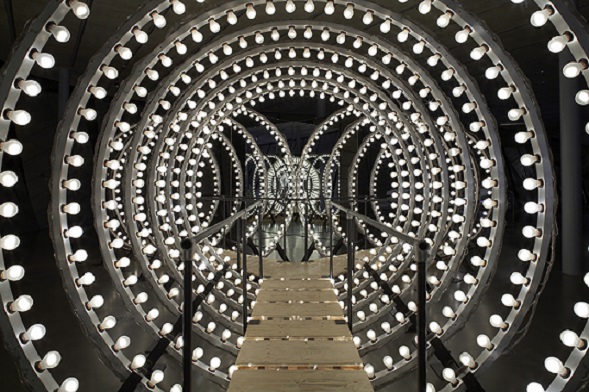Stuff that matters. Mimesis and (the end of) magic in Walter Benjamin
DOI:
https://doi.org/10.13130/2240-9599/10366Abstract
The paper focuses on the quite famous but also still quite mysterious idea of “immaterial similarity” (or more literally “nonsensous similarity”) by Walter Benjamin. Benjamin argues that the production of an immaterial similarity is in some way an act of magic. But it is also at the same time an overcoming of magic itself. And the reason is that the “immaterial similarity” can open the way to a “materialistic perspective”. How can that be? In order to answer, we’ll consider Benjamin’s idea of “matter”. In Benjamin’s early writings matter (Materie) appears, as we shall see, as something magic. But there is another idea, which is quite near to matter but is not exactly the same: the idea of “stuff” (Stoff). The stuff is the “material” things are made of. If we search for a definition of it, we can find that it is “the mute, soft and flocky element that – like the snow in the snow globes – clouds over inside the core of things”. We are going to examine this problematic definition. We’ll discover that way that the idea of stuff marks, in comparison to matter, a possibility. A possibility that has to be seized, before it “flits past.
Riferimenti bibliografici
Benjamin A., 2015: Art’s philosophical work, London-New York, Rowman and Littlefield, 2015.
Benjamin A., 2017: The world of striving. Walter Benjamin’s «Notes to a study on the category of justice», «Anthropology and materialism» 1, https://journals.openedition.org/am/823.
Benjamin W., 1916: Über Sprache überhaupt und über die Sprache des Menschen, in Gesammelte Schriften, ed. R. Tiedemann, H. Schweppenhäuser, Frankfurt a.M, Suhrkamp, 1991, vol. II.1, pp. 140-157.
Benjamin W., 1923: El mayor monstruo, los celos von Calderon und Herodes und Mariamne von Hebbel. Bemerkungen zum Problem des historischen Dramas, in Gesammelte Schriften, ed. R. Tiedemann, H. Schweppenhäuser, Frankfurt a.M, Suhrkamp, 1991, vol. II.1, pp. 246-276.
Benjamin W., 1928: Ursprung des deutschen Trauerspiels, in Gesammelte Schriften, ed. R. Tiedemann, H. Schweppenhäuser, Frankfurt a.M, Suhrkamp, 1991, vol. I.3, pp. 203-430.
Benjamin W., 1929: Einiges zur Volkskunst, in Gesammelte Schriften, ed. R. Tiedemann, H. Schweppenhäuser, Frankfurt a.M, Suhrkamp, 1991, vol. VI, pp. 185-187.
Benjamin W., 1931: letter to Max Rychner, 7 March 1931, in Briefe, ed. G. Scholem, T.W. Adorno, Frankfurt a.M., Suhrkamp, 1978.
Benjamin W., 1932-1938: Berliner Kindheit um neunzehnhundert (Gießener Fassung), Frankfurt a.M., Suhrkamp, 2000.
Benjamin W., 1933a: Der Augenblick der Geburt, in Gesammelte Schriften, ed. R. Tiedemann, H. Schweppenhäuser, Frankfurt a.M, Suhrkamp, 1991, vol. II.3, p. 956.
Benjamin W. 1933b: Über das mimetische Vermögen, in Gesammelte Schriften, ed. R. Tiedemann, H. Schweppenhäuser, Frankfurt a.M, Suhrkamp, 1991, vol. II.1, pp. 210-213.
Benjamin W., 1933c: Lehre vom Ähnlichen, in Gesammelte Schriften, ed. R. Tiedemann, H. Schweppenhäuser, Frankfurt a.M, Suhrkamp, 1991, vol. II.1, pp. 207-208.
Benjamin W., 1935: Das Ornament…, Fr., in Gesammelte Schriften, ed. R. Tiedemann, H. Schweppenhäuser, Frankfurt a.M, Suhrkamp, 1991, vol. II.3, p. 958.
Benjamin W., 1938: Berliner Kindheit um neunzehnhundert (Fassung letzter Hand), Frankfurt a.M., Suhrkamp, 1978.
Benjamin W., 1939: Fr. 98, in Gesammelte Schriften, ed. R. Tiedemann, H. Schweppenhäuser, Frankfurt a.M, Suhrkamp, 1991, vol. VI, p. 127.
Benjamin W., 1991: Gesammelte Schriften, ed. R. Tiedemann, H. Schweppenhäuser, Frankfurt a.M, Suhrkamp.
Birnbaum A., 2009: Bonheur Justice, Walter Benjamin: Le détour grec, Paris, Payot, 2009.
Caygill H., 1998: Walter Benjamin: The colour of experience, London-New York, Routledge, 1998.
Desideri F., 2005: «The mimetic bond: Benjamin and the question of technology», in Benjamin A. (ed.), Walter Benjamin and art, London-New York, Continuum, pp. 108-120.
Desideri F., 2012: «I Modern Times di Benjamin», in Benjamin W., L’opera d’arte nell’epoca della sua riproducibilità tecnica: tre versioni (1936-39), a cura di F. Desideri, Roma, Donzelli, 2012, pp. VII-XLV.
Desideri F., 2017: «Dottrina della percezione e crisi della democrazia. Ancora a proposito de L’opera d’arte nell’epoca della sua riproducibilità tecnica», in Montanelli M. - Palma M. (a cura di), Tecniche di esposizione. Walter Benjamin e la riproduzione dell’opera d’arte, Roma, Quodlibet, 2017.
Downing E., 2011: Divining Benjamin: Reading Fate, Graphology, Gambling, «MLN» 126, 3, pp. 561-580.
Friedlander E., 2012: Walter Benjamin. Ein Philosophisches Portrait, München, Beck, 2012.
Gebauer G. - Wulf C., 1995: Mimesis, University of California Press, Los Angeles-Berkeley,1995.
Hanssen, B., 2004: «Language and mimesis in Walter Benjamin's work», in Ferris D.S. (ed.), The Cambridge Companion to Walter Benjamin, Cambridge, Cambridge University Press, 2004, pp. 54-72.
Menninghaus W., 1980: Walter Benjamins Theorie der Sprachmagie, Frankfurt a.M., Suhrkamp, 1980.
Opitz M., 2000: «Ähnlichkeit», in Wizisla O. - Wizisla E. (eds.), Benjamins Begriffe, Frankfurt a.M., Suhrkamp.
Scholem G., 1975: Walter Benjamin: die Geschichte einer Freundschaft, Frankfurt a.M., Suhrkamp, 1975.
Steiner U., 2004: Walter Benjamin. An Introduction to his work and thought, Frankfurt a.M., Metzler, 2004.
Tagliacozzo T., 2016: Walter Benjamin, Gershom Scholem e il linguaggio, Milano, Mimesis, 2016.
Warburg A., 1920: «Heidnisch-antike Weissagung in Wort und Bild zu Luthers Zeiten», in Id., Werke in Einem Band, ed. M. Treml, P. Ladwig, S. Weigel, Frankfurt a.M., Suhrkamp, 2010, pp. 424-491.
Weigel S., 1997: Entstellte Ähnlichkeit: Walter Benjamins theoretische Schreibweise, Frankfurt a.M., Fischer, 1997.
Weigel S., 2008: Die Kreatur, das Heilige, die Bilder, Frankfurt a.M., Fischer, 2008.



